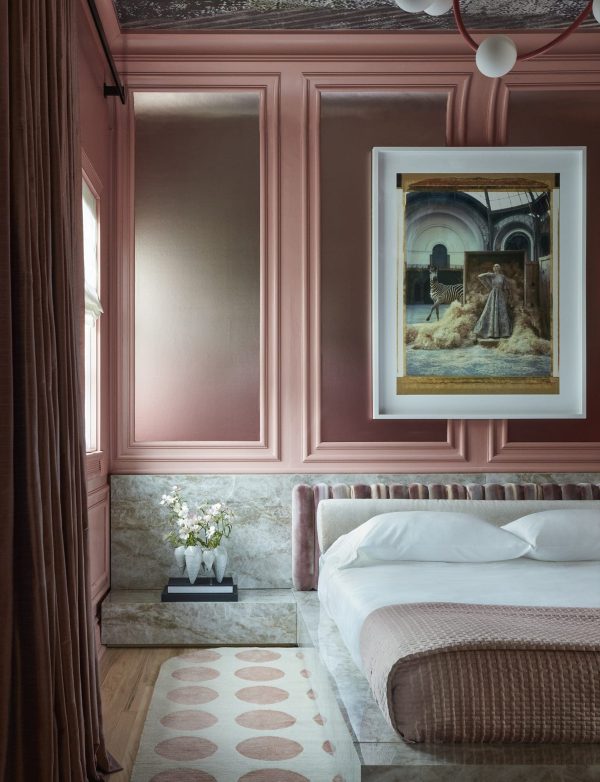In the realm of luxury interior design, achieving true artistry extends beyond visual appeal; it encompasses the creation of spaces that resonate on a deeper, emotional level. While color, light, and form often dominate conversations around design, it is texture that serves as the cornerstone of a transformative environment. Texture—both tactile and visual—imbues spaces with depth, warmth, and character, elevating them from merely beautiful to profoundly immersive. For the discerning luxury clientele, texture is not an afterthought but a signature of sophistication, craftsmanship, and intentionality.
The Understated Elegance of Design
Texture is a silent yet powerful communicator. It bridges the gap between aesthetics and experience, providing an additional sensory layer that is both subtle and profound. Whether through the cool touch of polished marble, the inviting softness of cashmere, or the organic irregularities of handwoven textiles, texture creates a dialogue between the space and its inhabitants.
It evokes emotions, inviting one to engage with the environment on a more intimate level. Natural textures such as wood, stone, and fibers offer comfort and connection, while sleek, polished materials convey precision and modernity. In luxury design, each material choice must harmonize with the desired ambiance and the client’s aspirations.
The Art of Layering
The hallmark of luxury design lies in its ability to balance complexity and cohesion. Layering textures is an advanced technique that transforms spaces into symphonies of material interplay, uniquely attuned to the tastes of ultra-high-net-worth clients. This discerning audience seeks environments where every surface tells a story and every material exudes purpose.
By curating a dynamic interplay of textures—combining the softness of mohair with the ruggedness of hand-chiseled stone or juxtaposing the gloss of lacquer against the matte of raw wood—designers can craft interiors that feel both personal and profoundly luxurious, resonating deeply with the client’s elevated sensibilities.
Imagine a contemporary living room: a sofa upholstered in supple velvet serves as the focal point, its opulent sheen contrasting with the matte texture of a hand-knotted wool rug. A sleek travertine coffee table introduces a sense of permanence, while accents such as aged brass decor and ribbed glass vases add nuanced layers. This orchestration of textures invites touch and exploration, engaging the senses in a way that is both subtle and profound.
The principle of contrast is pivotal. A space devoid of textural variety risks monotony, no matter how luxurious its components. By juxtaposing smooth against rough, matte against glossy, and rigid against soft, designers can craft spaces that exude both dynamism and harmony.
A Testament to Authenticity
In the modern era of design, where mass production often undermines originality, texture serves as a hallmark of authenticity. Luxurious spaces are defined not just by their aesthetic appeal but by the narrative embedded within their materials. The handwoven silk of a bespoke drapery, the organic veining in a slab of Calacatta marble, or the artisanal patina of a bronze accent—each tells a story of craftsmanship, heritage, and individuality.
Affluent clients increasingly value craftsmanship and authenticity over mere brand prestige. This underscores the imperative for designers to curate textural elements that resonate with the client’s appreciation for artistry. For these discerning individuals, the tactile and visual nuances of texture are not mere embellishments but defining elements of their living environments.
Spatial Harmony
Achieving balance is a cornerstone of luxury design, and texture plays a vital role in this endeavor. The interplay of materials can ground a space, ensuring it feels cohesive and intentional while avoiding the risk of visual or sensory overwhelm.
Consider a dining room with grand proportions: towering ceilings, expansive windows, and a statement chandelier. Without thoughtful textural interplay, such a space might feel cold or impersonal. Introducing tactile warmth through a richly grained walnut dining table, velvet-upholstered chairs, and a hand-tufted silk rug transforms the room into a harmonious blend of grandeur and intimacy. The tactile elements soften the architectural scale, inviting an emotional connection to the space.
Biophilic Design and the Luxury Market
In recent years, the principles of biophilic design have gained prominence in luxury interiors, driven by an increasing awareness of the human need to connect with nature. Texture serves as a critical conduit for integrating natural elements into indoor environments, fostering tranquility, and well-being.
By incorporating textures like rough-hewn stone, weathered wood, and organic textiles, designers can create sanctuaries that feel both luxurious and nurturing. For example, a spa-inspired bathroom outfitted with honed limestone, a teak vanity, and plush Turkish towels evokes a sense of serene retreat while epitomizing understated elegance.
The Timeless Allure of Texture
Texture transcends trends, offering a timeless dimension to luxury interiors. It is the silent poetry of design, speaking to the senses and evoking emotions that linger long after the first impression. For ultra-high-net-worth clients, who seek not only beauty but meaning and connection, texture is an indispensable tool for creating spaces that resonate deeply and authentically.
As a designer, my philosophy centers on the belief that texture is not merely a decorative element but a narrative force. It is through the thoughtful layering of materials, the celebration of craftsmanship, and the pursuit of innovation that I craft environments that inspire, elevate, and endure.
In the end, it is the intricate dance of textures—the cool whisper of stone, the warm embrace of velvet, the organic rhythm of wood grain—that transforms a house into a home, and a design into a masterpiece. For those who understand that true luxury lies in the details, texture is the ultimate expression of sophistication and artistry.
